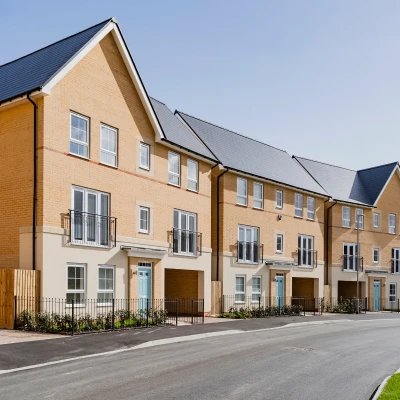Renters Reform Bill and professionalizing the PRS

The Renters’ Reform Bill has been on the cards for some time: it was originally proposed four prime ministers ago, by Theresa May as a ‘step change’ in protections for tenants.
The purpose and progress of the legislation
Following the inclusion of the future Renters’ Reform Bill in the 2022 Queen’s Speech, the Government published a white paper A Fairer Rented Private Sector, followed by a consultation A Decent Homes Standard in the private rented sector.
The resulting legislation, which is expected this parliamentary session, is intended to ‘professionalise’ the private rented sector (PRS) and, according to ministers, ‘redress the balance between landlords and 4.4 million private rented tenants’.
More specifically, the Bill is likely to legislate for the creation of a register of landlords, new powers to enable local authorities to enforce and protect renters' rights, the creation of an ombudsman for the PRS and the abolition of Section 21 ‘no fault’ evictions.
At Leaders Romans Group we work with a wide range of landlords – from individual ‘amateur landlords’ who own a single investment property, to institutional investors, who operate larger-scale investments across many geographic locations within the UK and of course in the growing Build to Rent (BTR) sector.
So we see the pressures of changing market conditions and imminent legislation across the sector. And while we are strongly in favour of high standards in health and safety, security of tenancies and fair rents, we see the major problem facing the sector as being one of supply and demand.
The changing private rented sector
According to the English Housing Survey 2022, the number of households renting privately has increased by 93% in the last 15 years, while the number of owner-occupied households has grown by just 3%. The increased number renting is not solely linked to mortgage rates or the economy, but is part of a longer term trend which also responds to the preference among younger generations for more flexibility. The same survey shows a new tenant demographic emerging: the numbers of renting households with dependent children has doubled since 2003/4, making up 30% of the sector and the number of ‘comfortable renters’ (middle-class and well-off) is expanding too, representing 44% of the rental sector.
The lack of supply to meet increased demand (coupled with increased interest rates) has driven up prices. Rental unaffordability is now at its highest level for over a decade: equating, according to recent research by Zoopla, to 35% of the average income of a single earner.
At the same time, the stock of homes for rent is down 38% on the five-year average, mostly due to landlords withdrawing from the market for a complex set of reasons including a raft of new regulations and concerns about further limitations to come. This includes not only in the Renters’ Reform Bill but in the likely requirement for new tenancies agreed on rental properties to have an EPC rating of C by the end of 2025, and by the end of 2028 for existing tenancies. We believe that approximately 30-40% of aged rental stock is currently below band C (excluding exempt properties) - so there is some work to be done!
The growth of Build to Rent
Clearly a solution to meeting demand and preventing further rent escalations is increasing supply – and, importantly, to ensure quality in new rental stock. Fortunately the signs are positive. Research shows a substantial increase in ‘professional’ institutional investment in the UK BTR market. Surveyed in 2022, 70% global institutional investors stated that they anticipated being active in the suburban BTR market within the next five years: a substantial increase from the 42% currently active. Furthermore, recent analysis by the British Property Federation (BPF) states that the sector is set to be worth £170bn by 2032, due to BTR units in the UK rising from 76,800 to over 380,000. Bearing in mind that the Government’s 300,000 homes per year housebuilding target has been missed at every turn, that is some going!
And BTR is no longer limited geographically. From the outset, the vast majority of BTR schemes have been located in London, but this has been surpassed by regional growth. The BPF's Build to Rent Q3 2022 statistics show regional BTR growing at almost triple the pace of that in London: 20%, compared to 7%.
And so the BTR suburban community has evolved. Providing desirable homes for families in fully-functioning serviced communities, this new product – which offers growing families considerable flexibility and a wide range of options for a stress-free lifestyle, is undoubtedly the division of the property sector in which we will see the greatest growth over the next decade. A BTR suburban community allows an individual or family to occupy a house which can be made their own - but could be swapped for another as the family’s needs change, with each move being free from the complications of buying and selling. Typically a BTR suburban community offers 24/7 security, all-inclusive bills and a range of additional services such as cleaning, gardening and even dog-walking. Some are powered by a district heating system, using clean, renewable energy and removing the need for a boiler – or even an energy bill. Future-proofed, each home will provide an EV charging point. The range of services typically available include a cinema, a BBQ area, a residents’ lounge, or perhaps a dining or party suite.
Our recent white paper BTR suburban communities: the next stage in the evolution of Build to Rent found that suburban BTR is key to meeting growing demand as well as meeting the standards that the Government has set out: BTR suburban communities offer fair leases and rents, along with excellent service and property maintenance.
The future for the PRS
The speed by which BTR is evolving – also evidenced by our increasing work for this sector – suggests that the drastic shortage of rental properties will lessen during 2023.
And while these changes will undoubtedly help ‘professionalise’ the sector, this is not the result of a future Renters’ Reform Bill: it is in spite of it. New models of BTR have evolved because of the high standards – environmental, social and governmental (ESG) along with financial transparency and insistence on a quality product – instigated by investors and developers.
The rental sector is carving a positive future for itself, one which must be supported by policy, not penalised by it. I am mindful of a comment made by levelling up secretary Michael Gove last year, in which he declared: ‘We need to shrink the private rented sector and get more people owning their own home.’
If the Renters’ Reform Bill, in raising standards, pushes the 'rouge landlords’ out of the market it has served its purpose. But if the underlying objective is to further reduce stock, the problem will only be exacerbated. To reduce the size of the PRS would increase homelessness before homeownership.
A combination of privately owned homes supplied by responsible individual landlords, complemented by increased institutionally-owned BTR units, is vital to meeting unprecedented demand. The bar has been raised ahead of the legislation enforcing it, and any 'rouge landlord' landlords will have to raise their game or risk losing their tenants.

Contact Us
Got a question, general enquiry or something else?
You may also like
Since we started in 1987 we have grown to one of the UK’s largest property groups, we can save you time and money by offering a range of services and expertise under one roof.



